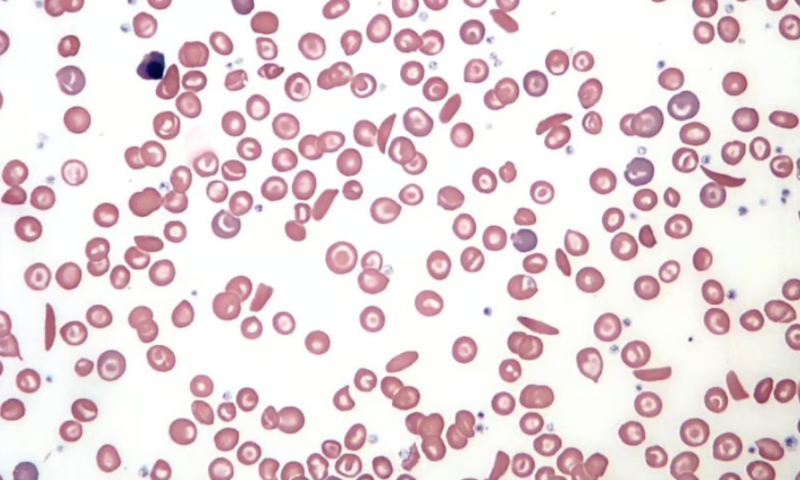It’s a reality that patients with sickle cell disease can only wish for: Walk into a clinic, get a shot and, soon after, be free of disease. No desperate search for a stem cell donor. No chemotherapy. And, ideally, no millions of dollars in medical bills.
Such a scenario may seem like a pipe dream for now, but that’s not stopping scientists from trying. On July 27 in Science, scientists from Children’s Hospital of Philadelphia and the University of Pennsylvania’s Perelman School of Medicine revealed a new proof-of-concept mRNA-based in vivo gene therapy that is meant to correct the gene mutation that causes sickle cell in human cells without needing to alter cells outside the body.
“The bottom line is that right now, if you want to do gene therapy—especially for stem cells in the bone marrow—you need to basically perform three steps: take the cells out, modify them, and put them back,” co-senior author Stefano Rivella, Ph.D., of Children’s Hospital of Philadelphia, or CHOP, told Fierce Biotech Research in an interview. “The advantage of our approach is that you could eventually modify the cells genetically with a single injection.”
The new therapy consists of mRNA encapsulated in a lipid nanoparticle, or LNP, targeted to hematopoietic stem cells (HSCs). If this sounds a bit like a souped-up version of the technology behind the COVID-19 vaccines, that’s because it is: It’s the same type of LNP, only this time with the addition of antibodies to the CD117 receptor found on HSCs. That means the therapy is predominantly targeted to cells in the bone marrow rather than being distributed systemically.
The mRNA contains the instructions for a cas9 protein that converts the sickle cell disease-causing gene mutation in HSCs into a non-disease-causing variant. When the system was tested in human HSCs from patients with sickle cell disease, it was around 90% effective.
In vivo gene therapy could offer significant advantages over both bone marrow transplants—the only way to treat sickle cell disease currently—and experimental gene therapies that are making their way through clinical trials and the FDA regulatory process. For those treatments, patients must undergo chemotherapy to clear out old, mutated HSCs before they can receive donor cells—or, in the case of gene therapy, before having their own modified cells re-engrafted. The high doses of chemo required can leave patients infertile and immunocompromised, which necessitates prolonged hospital stays.
“Basically, we can avoid all these steps and, theoretically, we can deliver the correction directly to the cells of the bone marrow,” Rivella said. “And the patient doesn’t even need to stay one day in the hospital. Just go to the clinic, get the injection, and go home.”
Separately, the researchers also developed and tested in mice another mRNA-based therapy to kill off HSCs, which could speed up the conditioning process that patients with sickle cell have to go through.
In an accompanying perspective article that ran in Science along with the new study, gene therapy researchers Samuele Ferrari and Luigi Naldini—of Italy’s San Raffaele Telethon Institute for Gene Therapy and the Vita-Salute San Raffaele University, respectively—noted that, despite limitations, the findings were significant both for treating blood disorders and for research.
The results “provide a promising glimpse into a future when in vivo engineering by means of transient delivery of mRNA-encoding editing tools such as CRISPR will circumvent the limitations of ex vivo HSC gene therapy,” they wrote. “Moreover, in vivo modulation of biological functions in resident HSCs could pave the way to new discoveries.”
Still, the CHOP and Penn team has much to learn before the results can be translated to patients. There is concern with HSC gene therapies in general that if the new cells don’t grow successfully for any reason, the patient could be left worse off than before the treatment. In the long term, “competition for survival and/or growth among cells with different fitness and increased replication stress” could make mutated cells grow faster, predisposing patients to blood cancer, according to Ferrari and Naldini.
Mitigating that risk requires more research at the preclinical level, they added—something that the scientists at CHOP and Penn are currently doing. The team plans to test both therapies in additional animals studies, including non-human primates, which will give them a much better idea of whether it has potential in humans.
The possibility of a more affordable way to treat sickle cell disease is worth the effort, Rivella noted. While forthcoming gene therapies from bluebird bio and Vertex and CRISPR Therapeutics offer much to look forward too, the sky-high price—expected to be at least $1.7 million for a single treatment—may limit scalability, even if that’s a quarter of the estimated lifetime cost of treating the condition.

